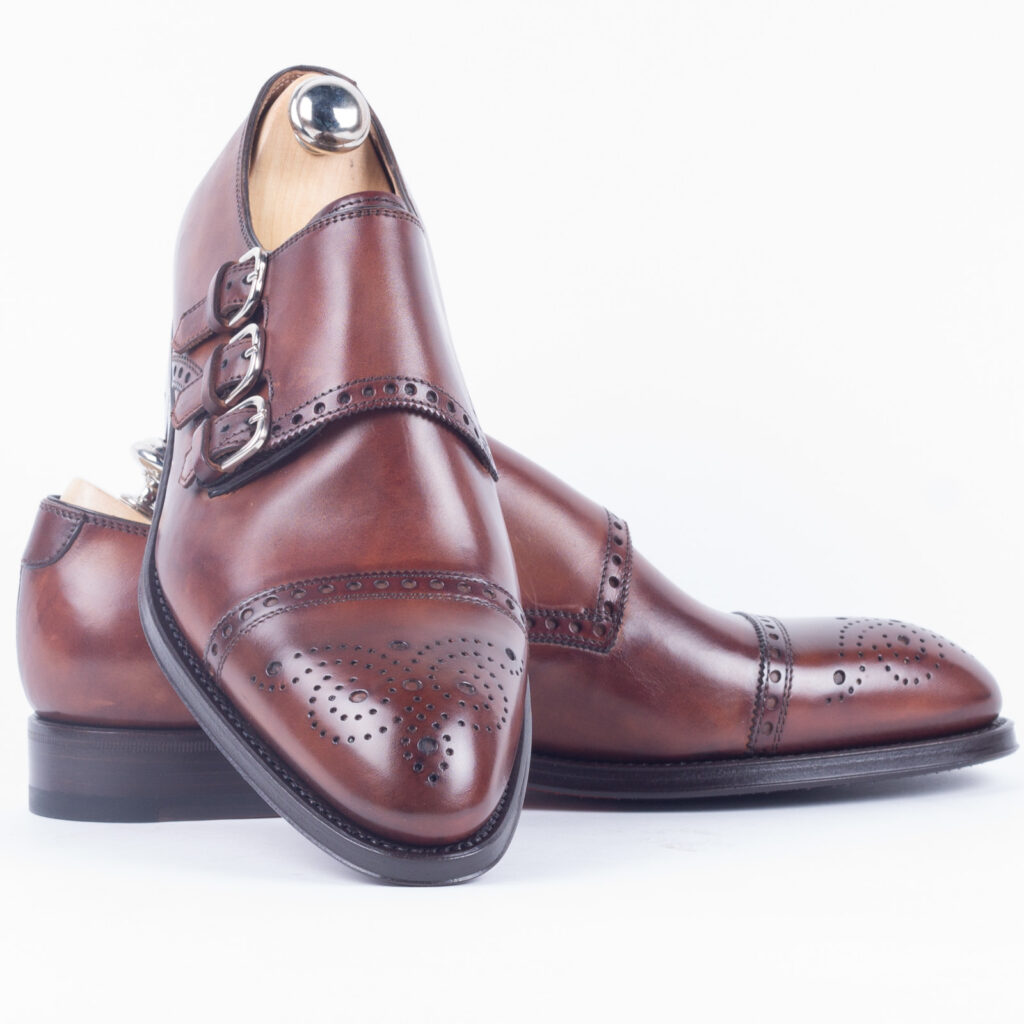Quali scarpe hanno fatto la storia della moda?
Esistono dei modelli di scarpe senza tempo, che non passano mai di moda? E che soprattutto hanno fatto la storia della moda?
La risposta è assolutamente sì.
Le scarpe Made in Italy sono riconosciute e amate in tutto il mondo per il loro stile classico, elegante e senza tempo.
Ecco perché molti brand decidono di proporre ogni anno modelli classici, che non passano mai di moda. Dai mocassini alle scarpe stringate, questi modelli sono amati e scelti da moltissime persone che desiderano dare un tocco di raffinatezza ai loro outfit.
Ma quali sono i modelli di scarpa che ormai sono diventati un “classico”?
Il Gommino Mocassino di Tod’s
Se parliamo di Tod’s pensiamo subito a una scarpa in particolare che nel corso degli anni è diventata un’icona, si tratta del Gommino Mocassino.
Questa calzatura è il frutto di un’intuizione di Diego Della Valle che negli anni ’70, ispirato da un mocassino da pilota visto in un negozio di antiquariato di Manhattan, crea una scarpa casual e chic al tempo stesso.
E nasce così un mocassino leggerissimo, piatto e ultra morbido, interamente cucito a mano e caratterizzato dalla presenza di 133 chiodini di gomma sulla suola.
Il gommino fu un vero successo dal momento che si adattava bene sia ai look più formali che allo stile casual e ben presto divenne la scarpa preferita da celebrità e star del cinema.
Oggi la collezione Gommino continua ad essere amata e richiesta; è disponibile in diverse versioni, finiture e colori, oltre che personalizzabile.
La doppia fibbia di Santoni
La scarpa doppia fibbia di Santoni fa parte di quei modelli imprescindibili che non possono proprio mancare in un guardaroba maschile. Nel corso degli anni è diventata la scarpa che contraddistingue questo brand nel mondo; la doppia fibbia la rende elegante e versatile al tempo stesso, aggiungendo un tocco sofisticato al look.
Oggi Santoni, brand nato negli anni Settanta con Andrea Santoni, la ripropone in numerose varianti di materiali e colori, offrendo un’interpretazione moderna ma sempre attuale.
Il mocassino Brera di Fratelli Rossetti
Erano gli anni Sessanta quando Renzo Rossetti inserì nel mocassino i celebri “fiocchetti” che hanno dato vita a questo modello. Introdurre questo elemento decorativo, in un momento in cui l’essenzialità regnava sovrana, rappresentava un atto quasi rivoluzionario nel panorama della moda italiana.
Proprio il suo carattere innovativo ha spinto il suo inventore a scegliere il nome Brera, lo storico quartiere milanese che ha dato vita a movimenti artistici e nuove tendenze.
Nato inizialmente come modello da uomo, viene declinato nei primi anni ’70 in una versione femminile; oggi il mocassino Brera è ancora disponibile e periodicamente viene presentato in edizioni limitate, come quella che ha celebrato i 50 anni di questa storica scarpa.
La scarpa “Alessandro” di Berluti
Si tratta di una vera e propria icona del brand appartenente al gruppo LVMH. Questa stringata ha una storia antica che risale al 1895 quando il fondatore della maison, Alessandro Berluti, realizzò la scarpa, partendo da un unico pezzo di pelle, senza nemmeno una cucitura.
La scarpa “Alessandro” fu presentata all’Esposizione Universale di Parigi del 1900 e conquistò subito la clientela più esclusiva, divenendo un’icona di stile.
Proprio l’assenza di cuciture rende la calzatura unica nel suo genere, perfetta per chi è alla ricerca di uno stile elegante, raffinato ed essenziale.

Bontoni
Le calzature firmate Bontoni sono frutto di una lunga tradizione secolare, che combina passione e bravura da parte degli artigiani, capaci di lavorare materie prime di altissima qualità.
Le scarpe Bontoni si contraddistinguono, inoltre, per il tipo di cucitura: la norvegese.
Occorrono tre cuciture per completare questa complessa lavorazione: la prima cucitura lega la tomaia al sottopiede, la seconda unisce la tomaia, dopo essere stata rovesciata esternamente, alla suola di mezzo. A questa viene infine cucita la suola finale creando così un unico corpo.
Questo metodo rende la scarpa robusta e soprattutto impermeabile.

Anche Fratelli Borgioli produce ogni anno modelli classici e senza tempo, cercando di interpretare la tradizione con eleganza e innovazione.
Le scarpe di Fratelli Borgioli sono il frutto di una tradizione familiare iniziata più di settant’anni fa in un laboratorio artigianale nel cuore della campagna fiorentina, a La Stella di Vinci.
Ogni calzatura firmata Fratelli Borgioli è un vero e proprio capolavoro artigiano, impeccabile e confortevole. La tradizione dell’artigianato toscano e l’innovazione tecnologica si fondono insieme per dare vita a una scarpa che accompagna chi la indossa per tutta la vita.
Con lo stile e la perfezione formale dei suoi prodotti, Fratelli Borgioli mantiene viva nel mondo la passione per il gusto italiano, grazie a una rete di rivenditori selezionati che credono nella bellezza e nella qualità.
Se desideri diventare un nostro rivenditore, CONTATTACI.

